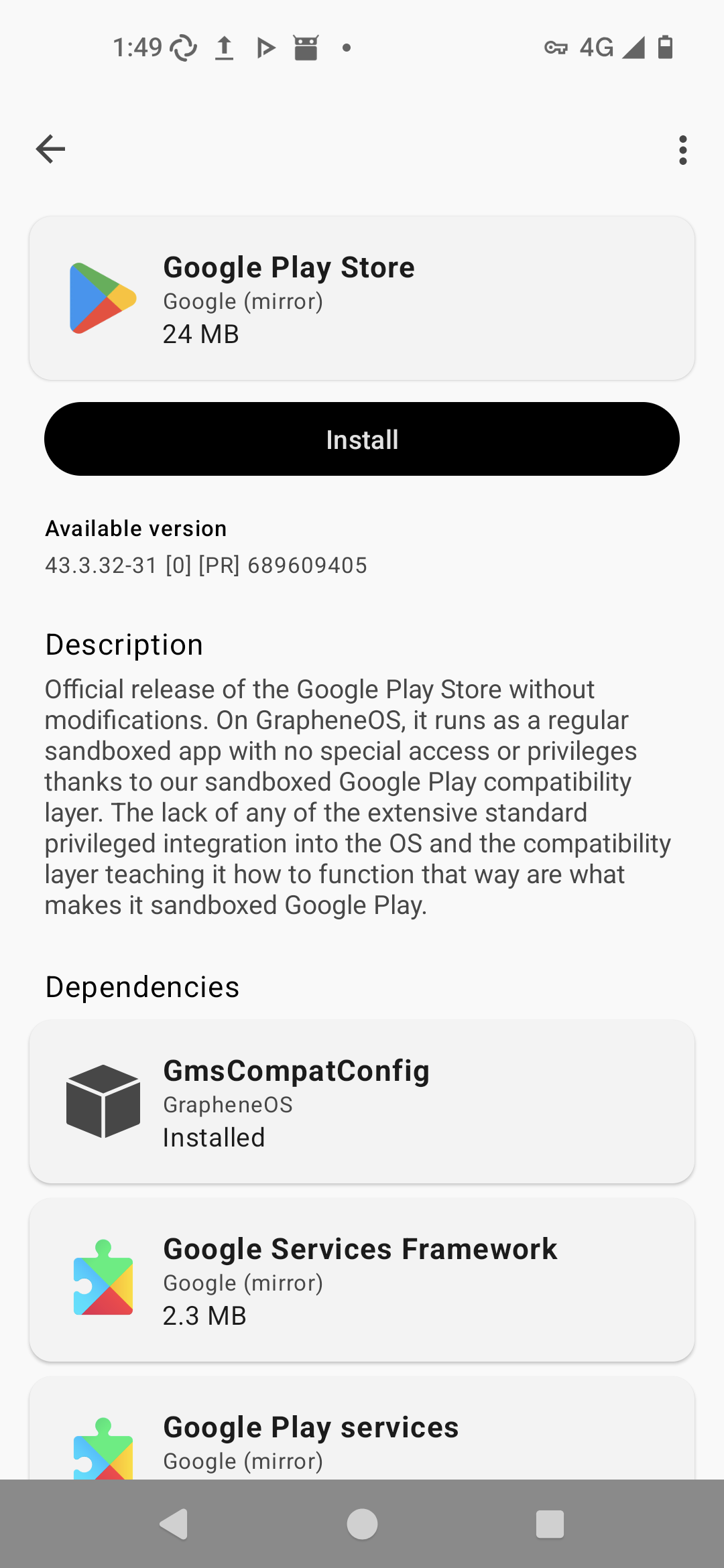

yggmail is a fairly obscure and experimental take on email on a mesh network: https://github.com/neilalexander/yggmail
Website: https://roffey.au


yggmail is a fairly obscure and experimental take on email on a mesh network: https://github.com/neilalexander/yggmail
My original reply to the OP’s question, thoughts and experiences with GrapheneOS, was along the lines of “I think GrapheneOS is Google-centric” and you disagreed saying that GrapheneOS was a “blank slate”. Honestly I think you’re being a bit defensive and maybe a little gaslighty which is why I downvoted.
GrapheneOS provides fairly prominent links to a Google Play installer or the relatively obscure Aurora Store. The Aurora Store client app is FOSS but the store is quite literally a proxy for the Google Play Store. The apps in the screenshots on Ausora Store’s homepage are mostly apps that use or require Google Play Services. This is all very Google-centric.
If Google Play wasn’t an important part of GrapheneOS, it could just not contain a prominent link to the Google Play installer. Or it could contain a link to install a fairly prominent app store that offers an ecosystem outside of Google Play. But it exclusively steers users to the Google Play ecosystem as a part of the default, packaged experience, hence my original reply to the OP.
But it is Google Play-centric. There is an option to install Google Play. There is not an option to install other app stores like F-Droid, unlike some of the other AOSP clones.
Screenshot for you. Google is explicitly linked to for easy setup. F-Droid is not. “There is nothing” is simply disingenuous.

I use GrapheneOS but I don’t like how Google Play-centric it is. It is geared towards people installing their “normal” apps with the GrapheneOS special sauce sandboxing. No F-Droid by default where all of the FOSS apps are.


PSA: if your financial institution/government/<other website> is using SMS codes (aka PSTN MFA) for multi-factor authentication they are practically worthless against a determined attacker who can use SIM swap or an SS7 attack to obtain the code. Basically you are secured by a single factor, your password. If your password is compromised it may be sold via black hat marketplaces and purchased by an attacker who would then likely attempt to break that second factor.
The best way to protect yourself is to use a unique password; a password manager especially helps with this. Sometimes institutions will offer “Authenticator” (TOTP) as a second factor, or PassKey authentication, both secure alternatives to SMS codes.
Here in Aus I’m working with Electronic Frontiers Australia to try and force some change within government and financial institutions (via the financial regulator). Most banks here use SMS codes and occasionally offer a proprietary app. One of the well-known international banks, ING Bank, even uses a 4 pin code to login to their online banking portal. 😖
Unfortunately SMS codes are a legacy left from old technology and a lack of understanding or resourcing by organisations that implement it. Authenticator/TOTP tokens have been around for 16 years (and standardised for 13 years), and PassKeys are relatively newer. There is a learning curve but at the very least every organisation should at least provide either TOTP or PassKeys as an option for security-minded users.


Yeah it is a bit of a pain. I currently only have a few users. Tooling-wise there are ways to tail the journals (if you’re using journalctl) and collate them but I haven’t gotten around to doing this myself yet.


At work we use separate clusters for various things. We built an Ansible collection to manage the lot so it’s not too much overhead.
For home use I skipped K8s and went to rootless Quadlet manifests. Each quadlet is in a separate non-root user with lingering enabled to reduce exposure from a container breakout.
yggmail specifically, probably not. yggdrasil uses TCP/IP and the Meshtastic latencies to perform connections would be too high AFAIK. It would probably only work in a fairly well-connected network. yggdrasil could be used directly over a WiFi protocol but it would need fairly good reception to function.
N.B. I haven’texperimented with this myself.